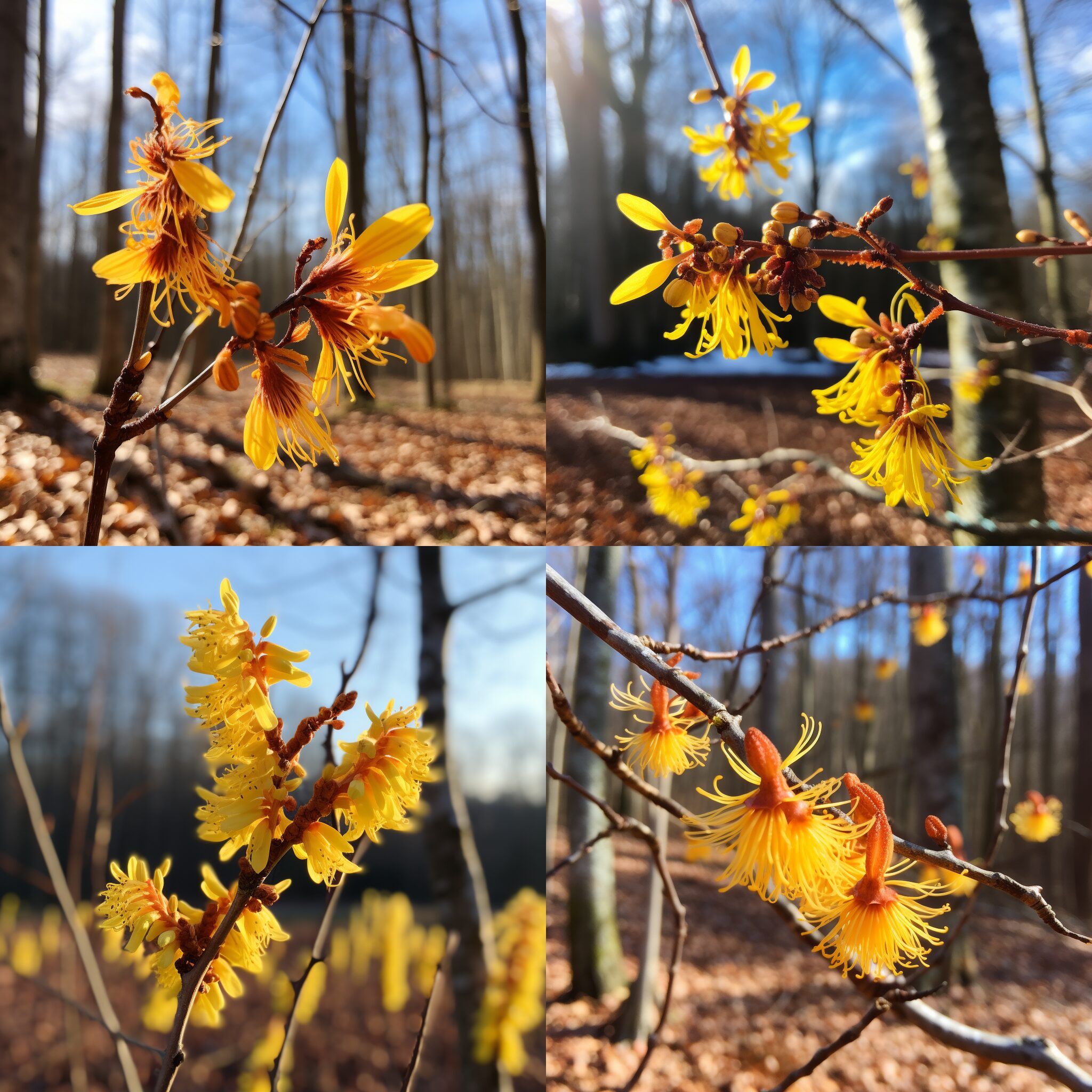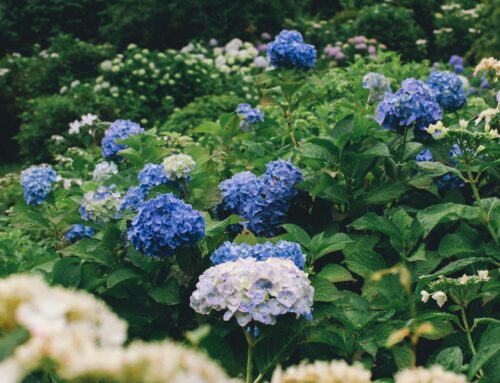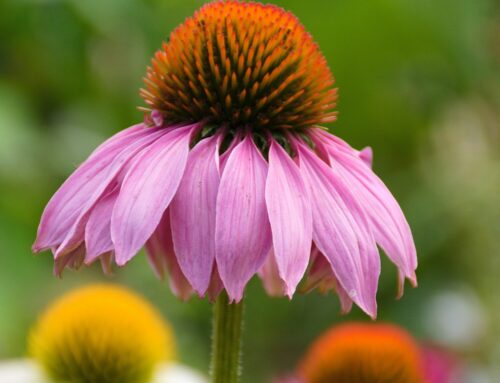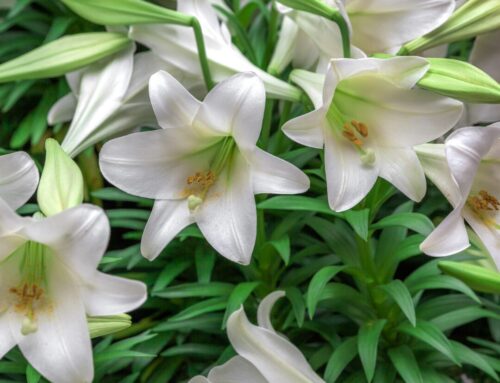In the enchanting world of botanical wonders, few plants hold the mystique and healing prowess of Hamamelis, commonly known as witch hazel. With its delicate blooms, vibrant foliage, and potent medicinal properties, Hamamelis has captured the imagination of herbalists, gardeners, and skincare enthusiasts alike. Join us on a journey as we unravel the secrets of this remarkable plant and explore its rich history, diverse uses, and enduring allure.
- Botanical Background:
- Hamamelis, a genus of flowering shrubs and small trees, belongs to the family Hamamelidaceae.
- Native to North America and East Asia, Hamamelis species are renowned for their resilience and adaptability to various climates and soil conditions.
- The name “witch hazel” is believed to have originated from the Middle English word “wiche,” meaning pliant or bendable, referring to the plant’s flexible branches, and “wych,” an old English term for pliable.
- Historical Significance:
- Indigenous peoples of North America, such as the Cherokee and Mohawk tribes, revered witch hazel for its medicinal properties, using it to treat a myriad of ailments, including skin irritations, inflammation, and insect bites.
- Early European settlers adopted these traditional uses and introduced witch hazel to colonial America, where it became a staple in folk medicine and household remedies.
- In the 19th century, witch hazel gained widespread popularity as a commercial remedy, with distillates and extracts being produced for various medicinal and cosmetic purposes.
- Medicinal Uses:
- Witch hazel is renowned for its astringent, anti-inflammatory, and antiseptic properties, making it a valuable ingredient in natural remedies and skincare products.
- The bark, leaves, and twigs of Hamamelis contain tannins, flavonoids, and volatile oils, which contribute to its healing effects.
- Topically, witch hazel is used to soothe sunburns, relieve itching and irritation, reduce swelling, and promote wound healing.
- It is also employed as a gentle facial toner, helping to tighten pores, control oil production, and improve overall skin texture and complexion.
- Horticultural Delight:
- Beyond its medicinal virtues, Hamamelis captivates gardeners with its ornamental beauty and seasonal interest.
- The plant’s distinctive spidery flowers, which bloom in late winter to early spring, adorn the bare branches with shades of yellow, orange, or red, adding a welcome burst of color to the winter landscape.
- Hamamelis cultivars, such as Hamamelis × intermedia ‘Diane’ and Hamamelis virginiana ‘Harvest Moon,’ are prized for their vibrant blooms, fragrant scent, and compact growth habit, making them popular choices for garden borders, woodland gardens, and mixed shrub borders.
- Landscape Design:
- In landscape design, witch hazel offers versatility and year-round interest, serving as a focal point or complement to other plantings.
- Its early bloom time adds much-needed color and texture to winter gardens, providing a striking contrast against dormant deciduous trees and evergreen shrubs.
- Witch hazel’s compact size and graceful form make it suitable for various garden settings, including foundation plantings, entryways, and mixed borders.
- Pair witch hazel with spring-blooming bulbs, such as snowdrops or crocuses, to create captivating vignettes that herald the arrival of spring.
- Cultivation and Care:
- Witch hazel thrives in moist, well-drained soil and dappled shade, although some species can tolerate full sun or partial shade.
- When planting witch hazel, choose a site with good air circulation to prevent fungal diseases and ensure adequate spacing between plants to accommodate their mature size.
- Prune witch hazel selectively to maintain a balanced shape and remove dead or diseased branches, preferably after flowering to avoid disrupting the following year’s bloom.
- While witch hazel is relatively low-maintenance, regular watering during dry periods and mulching to retain soil moisture can promote healthy growth and flowering.
- Modern Applications:
- In addition to its traditional uses, witch hazel has found its way into a myriad of modern skincare and personal care products, including cleansers, toners, moisturizers, and acne treatments.
- Its natural astringent properties make witch hazel an effective ingredient for controlling excess oil, minimizing pores, and soothing sensitive or acne-prone skin.
- Witch hazel extracts are also utilized in hair care formulations, such as shampoos and conditioners, to promote scalp health, reduce dandruff, and enhance shine and manageability.
- Environmental Benefits:
- As a native plant species, witch hazel plays a vital role in supporting local ecosystems and wildlife habitats, providing food and shelter for pollinators, birds, and small mammals.
- Its deep taproot helps prevent soil erosion and improves soil structure, making it a valuable component of sustainable landscaping and reforestation efforts.
- Cultivating native plants like witch hazel in home gardens and green spaces can contribute to biodiversity conservation and ecological resilience, fostering a healthier and more vibrant natural environment.
Conclusion: In a world filled with synthetic remedies and mass-produced skincare products, the timeless allure and healing power of Hamamelis, or witch hazel, stand as a testament to the enduring wisdom of nature. From its humble origins in traditional medicine to its modern-day applications in skincare, horticulture, and landscape design, witch hazel continues to enchant and inspire us with its botanical beauty and therapeutic benefits. As we cultivate a deeper appreciation for the magic of witch hazel, let us also embrace its role as a steward of biodiversity and a symbol of our interconnectedness with the natural world.





